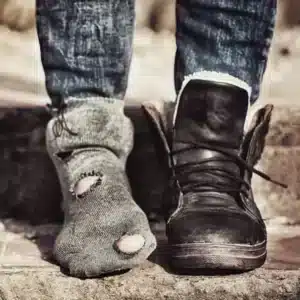Long before dryers turned socks into mysterious solo travelers, laundry was a communal ritual — one that required both patience and a few clever tools to conquer nature’s unpredictability. Chief among those tools? A simple, unassuming piece of wood: the clothespin.
Recently, a curious user posted a photo on Facebook of little wooden dowels with split legs, asking if anyone knew what they were. The internet quickly chimed in with collective wisdom, particularly from nostalgic boomers who remembered using them for a very specific task.
“Old school clothespins. [We] used them for hanging clean wet clothes outside on the [clothes] line to dry in the sun [and] fresh air!”
The humble wooden clothespin, also known as a clothes peg, has a surprisingly rich history. Its earliest incarnations stretch back to ancient times, when people fashioned clothespins out of wood, bone, or even stone to hold garments in place on a line. Some of these early versions were even intricately carved with decorative motifs, making them both functional and ornamental.
But it wasn’t until the 19th century that the clothespin truly evolved into the familiar form we know today.
The breakthrough came in 1853, when David M. Smith of Vermont patented a revolutionary clothespin design. His version featured two shaped wooden legs joined by a metal spring — a configuration that provided not just grip but genuine reliability, even when the wind tried to pull clothes free.
In his original patent, Smith wrote:
“Another advantage and a very important one too, [what] my improved clothes pin possesses over the common pin is that it cannot be detached from the clothes by the wind as is the case with the common pin and which is a serious evil to washerwomen.”
It’s easy to laugh now, but back then, losing socks or linens to a strong breeze wasn’t just frustrating — it meant more work, more washing, and more wasted time. Smith’s spring-loaded design made laundry days easier and far less windy.
From the mid-1800s into the early 20th century, clothespins were handcrafted from solid wood, often birch or maple. As industrialization took hold, factories began mass-producing them, reducing cost and increasing accessibility for families around the world.
For decades, wooden clothespins were a fixture in nearly every home. Even as plastic and electric alternatives emerged, the original design held strong — not just for its practicality, but for the feeling it evoked. There’s something deeply satisfying about the snap of a wooden pin and the sight of freshly washed sheets billowing in the breeze.
Today, they’re still in use, not only for hanging clothes but also in arts and crafts, rustic decor, and eco-conscious living.
Despite plastic pins gaining popularity due to lower costs and colorful options, wooden clothespins have never fully disappeared. In fact, they’ve become a symbol of sustainable living — durable, biodegradable, and free from synthetic materials.
And let’s not forget their nostalgic charm. For many, seeing a line of sunlit clothes pinned with wood brings back memories of mothers, grandmothers, and long afternoons spent under open skies.
So, what’s worse — losing a sock to the wind or to the dryer? Either way, it’s clear that the humble clothespin has done its part to fight the good fight.
“The wind can still snatch a sheet if you’re not careful,” one user joked, “but with a good old-fashioned wooden pin, at least you had a chance.”
If this story stirred a memory or made you smile, share it with your friends — and let us know: have you ever used these classic clothespins, or are you team dryer all the way?





